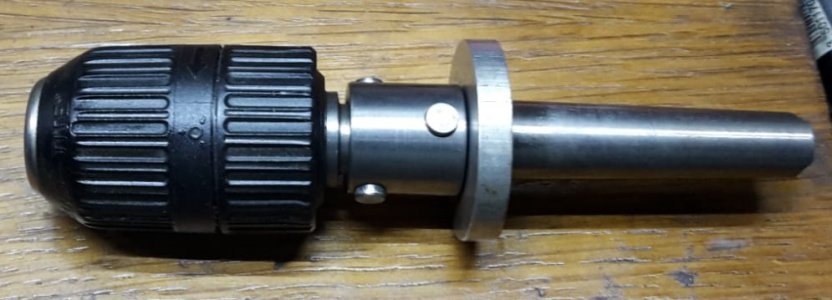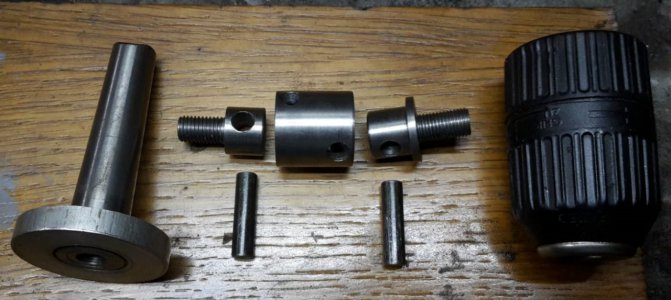I flirted with the idea of making a floating reamer holder in order to compensate for any misalignment in the lathe and mill.
I came across a design by Bill Zweig (https://www.practicalmachinist.com/vb/general/simple-floating-reamer-holder-306442/) and decided to give it a go as the build looked easy. I had a spare chuck and thought I could put it to some use.
The design is easy to understand and build. It is essentially a sort of universal joint with the joints being able to slip radially.
Unfortunately it failed consistently. Holes of various diameters were drilled and bored, then reamed using this holder. Holes resulted oversize by more than .03mm and halfway down the bore opened by .09mm and then returned to .03mm.
Tests were repeated with reamer held in regular chuck. Results were consistently satisfactory.
I was wondering if somebody had ever tried to build this type of holder, maybe I did something wrong.


I came across a design by Bill Zweig (https://www.practicalmachinist.com/vb/general/simple-floating-reamer-holder-306442/) and decided to give it a go as the build looked easy. I had a spare chuck and thought I could put it to some use.
The design is easy to understand and build. It is essentially a sort of universal joint with the joints being able to slip radially.
Unfortunately it failed consistently. Holes of various diameters were drilled and bored, then reamed using this holder. Holes resulted oversize by more than .03mm and halfway down the bore opened by .09mm and then returned to .03mm.
Tests were repeated with reamer held in regular chuck. Results were consistently satisfactory.
I was wondering if somebody had ever tried to build this type of holder, maybe I did something wrong.


Last edited:


